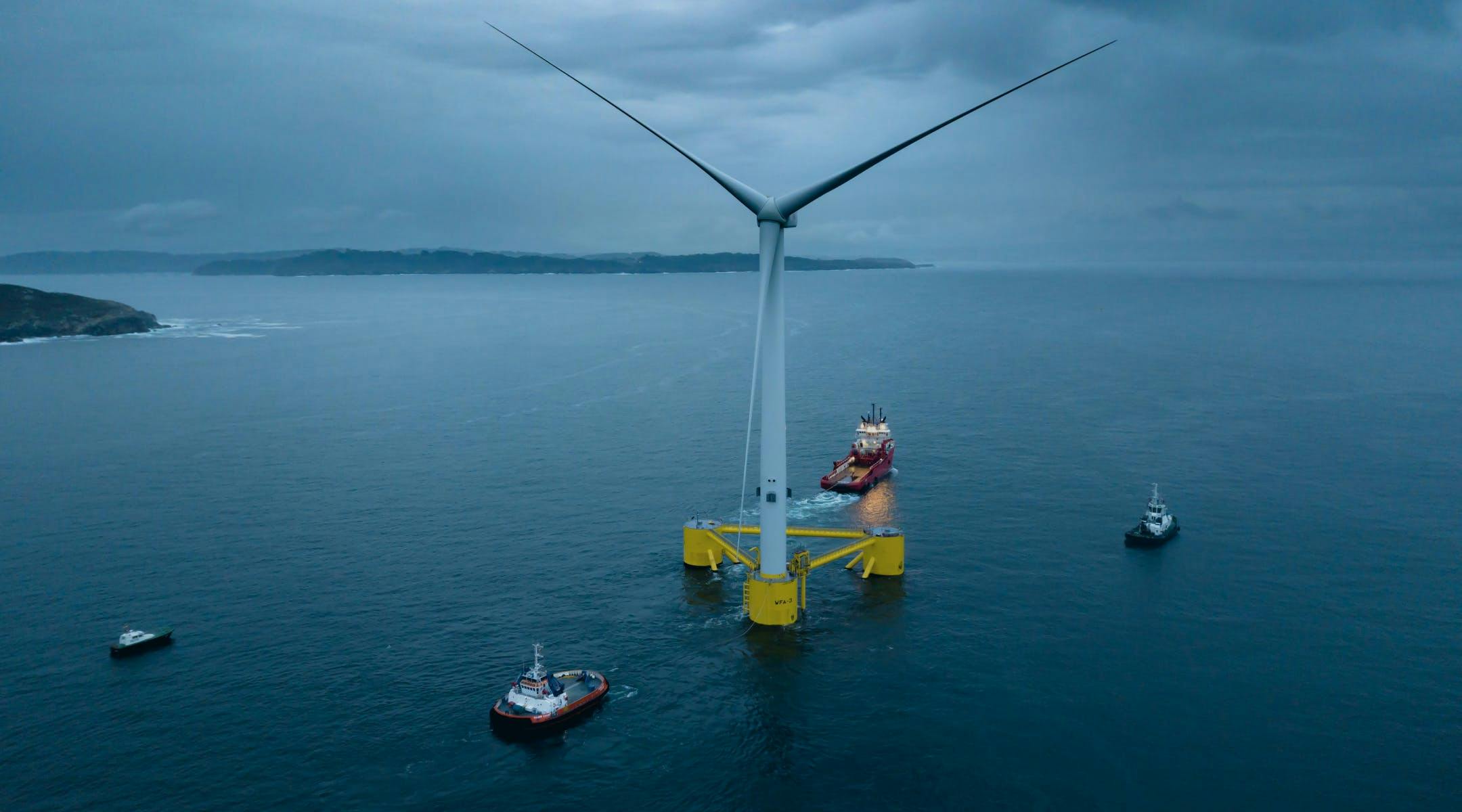“It’s the future of the world”
WindFloat Atlantic celebrates its third anniversary on December 31.

WindFloat Atlantic celebrates its third anniversary on December 31. Since achieving first power in 2019, the 8.4 MW turbines sited on top of three WindFloat® platforms generated around 130 GWh of clean power, feeding up to 50 000 homes and saving tens of thousands of tons of CO2 every year.
WindFloat Atlantic is sited 20 km offshore Viana do Castelo, in the north of Portugal. This project commemorates many industry-firsts: it was the first full-scale wind farm to use semi-submersible technology, the first floating wind farm in continental Europe, and the first floating wind farm to secure bank financing.
In its three years of operation, WindFloat Atlantic undoubtedly proved the reliability of floating offshore wind and of semi-submersibles in particular: back in December 2020, during Storm Dora, it sustained waves as high as 9 meters without breaking a sweat!
This video we’re now sharing is a homage to the unsung heroes of floating offshore wind, the offshore O&M technicians and engineers that keep the wind farm producing energy smoothly.
“It’s the future of the world”, says Fernando Barbosa, O&M Manager for the WindFloat Atlantic project. “You are just looking for the future and you are just one of these guys that has the chance to meet the future and touch it.”
Principle Power has served the WindPlus (Ocean Winds, Repsol, and Principle Power itself) consortium-owned wind farm since the very first day. We are glad to say that our team of intrepid O&M technicians and engineers has never recorded an incident or injury in three years of operations.
Samuel Rios, O&M Engineer, sheds light on the mindset presiding over such operations: “Safety is the number one priority. So in case there is any chance we are going to get lighting or bad sea we will just stay off the water and stay safe onshore.”
Fábio Pinheiro, Senior Offshore Technician, doubles down on this idea: working on floating offshore wind is “a challenge, let’s say. Because it is a new technology. The biggest challenge is that we always need to coordinate all the work with the weather. We need to keep an eye on that to ensure the floater will be always in a good shape to produce energy.”
With these objectives in mind – both safety and making the most out of the wind farm's ability to produce clean energy –, Principle Power is actively working on R&D projects in the realm of Smart O&M that decrease risk while ensuring maximum output, such as DigiFloat (“digital twins” technology applied to floating offshore wind) and EU H2020 Atlantis (remote unmanned inspection using robotics).
Back to Samuel: “Just seeing the scale and imagining how much engineering work it needs to function properly, I think there are so many challenges behind that. I think anyone that is curious, they would find it just very exciting. I would definitely recommend this for anyone.”
Do you hear the calling of the sea? The wind? Would you like to join our team? Check our Careers page and apply today!
The WindFloat® advantage
PerformanceFabricationInstallationInspection, Maintenance & RepairConnectionLocal CommunitiesEnvironmentServices
Project Development SupportConcept and Pre-FEED DesignFEED and Detailed DesignProject Execution SupportInspect, Maintain & RepairEnd of Life Services




